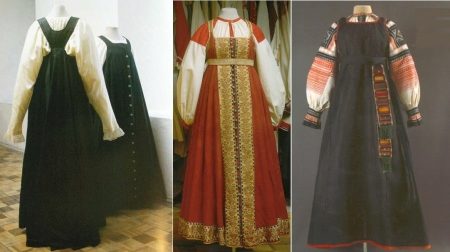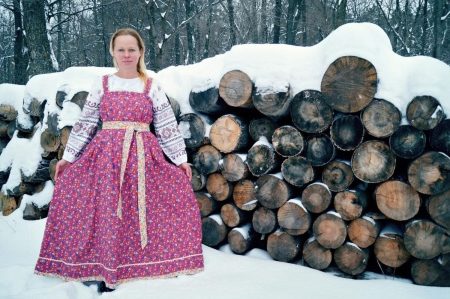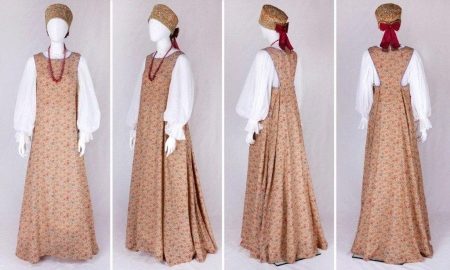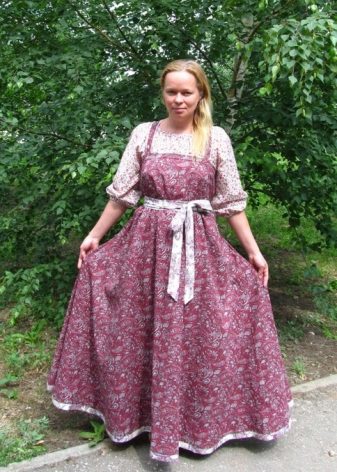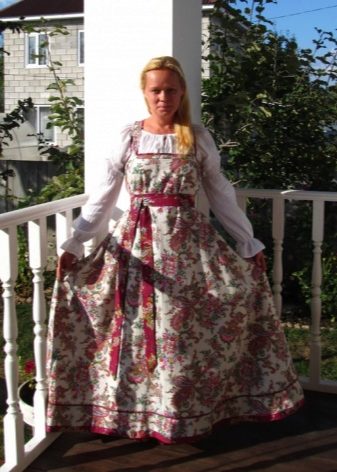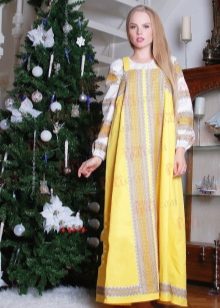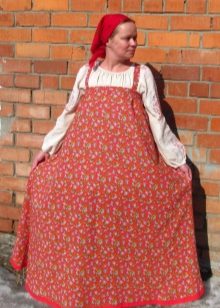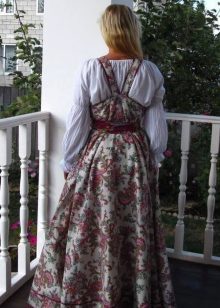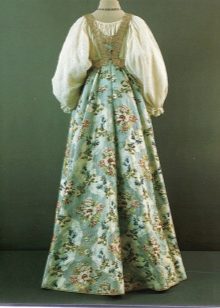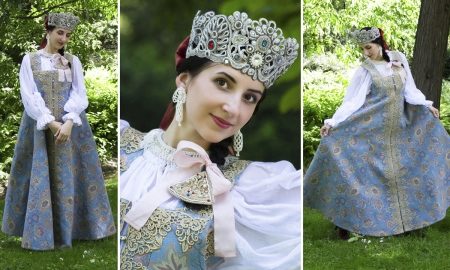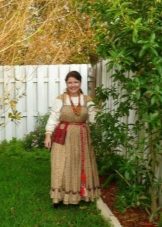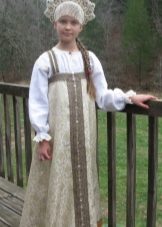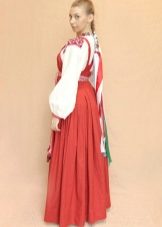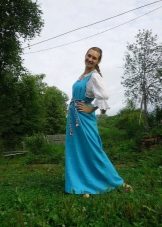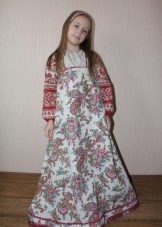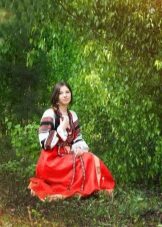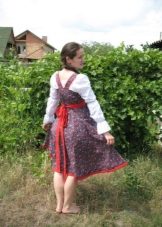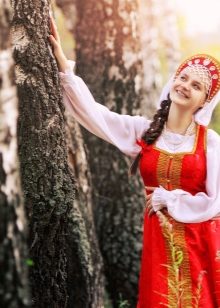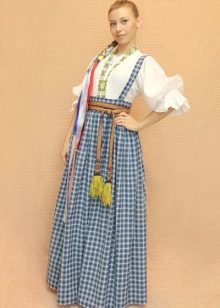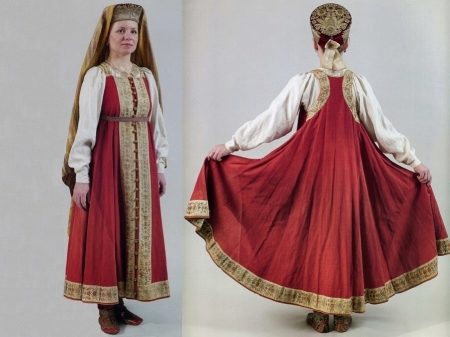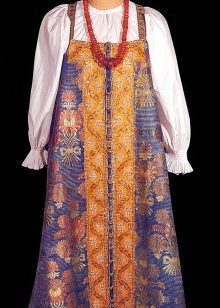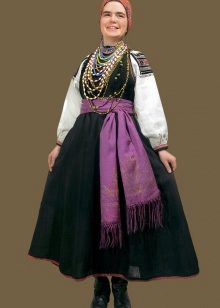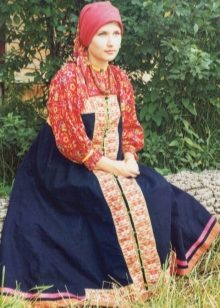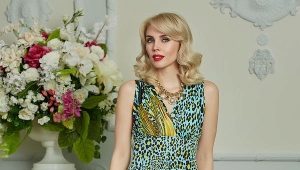Kosoklinny sundress
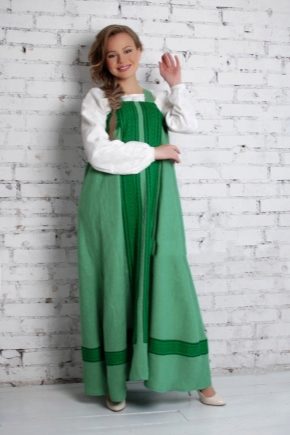
Russia boasts an unusually rich history, not only political, but also fashionable. Primordially, Russians now call for several elements of women's clothing — a letnik, a shushpan, a telegray, a dragon, a poneev, a zalona, and of course, a kosoklinny sundress. The last element of the wardrobe entered the ranks of the national and is so distinctive and interesting that I would like to talk about it separately.
A bit of history
The term "sundress" was first seen by historians in Russian letters of the 17th century. And this term was called the female element of clothing - a one-piece dress worn over the head, which could be with or without sleeves. But the clothes exclusively with straps were called at that time in a completely different way - sukman, feryaz, sayan, fur coat.
Kosoklinnye sarafans women wore until the beginning of the 20th century and they were long robes of a trapezoid or straight cut, which were necessarily buttoned and fabric loops from edge to edge. The main feature of the dress was oblique wedges on the sides from which he inherited his original name. It is interesting that the straps were sewn in those days to a small ledge on the back, which was called a mouse, fork or armhole.
To combine a kosoklminny sundress at that time was made with an elongated shirt and kokoshnik. It is curious that this sundress for a long time served as a dress for a poor part of the population of Russia. Since the beginning of the 18th century, it was worn mostly by older people, and by the beginning of the 20s of the last century it was almost completely replaced by other elements of clothing.
Model features
The decorative features of a kosoklinny sundress deserve special attention. This type of clothing has always been distinguished by the brightness of colors and originality of patterns. Most often on sarafans flowers were depicted that were dressed in a multi-colored edging. Often sundresses were tied with ribbons and bows, giving the appearance of the girl femininity and naivety.
But the quality of the material is often determined by the degree of prosperity of the young ladies. In velvet, silk and brocade models were girls from the richest families. The middle-class ladies could afford to wear a sarafan of Garus, and the poorest girls were content with outfits made of chintz. But the most respectable were white sundresses, on which flowers were embroidered with gold threads.
It is worth considering that the warmer sundress models were complemented by a dense lining, which was sometimes quilted. They were made of thick fabrics, most often of natural wool. Holiday dresses are often supplemented with lace ribbons or fringed ribbons. On weekdays, we used contrasting textile ribbons, which were tied with a bow or on a knot.
To suit
In kosoklinnom sundress looks absolutely every girl, regardless of age and build. The free cut and soft texture ensure smoothness and ease of movement, and due to the versatility of the decor, any, even the most significant figure flaws are concealed. The only thing worth taking care of a woman when choosing such a sundress is about choosing the right size for yourself.
Fashion trends
The history of Russian fashion kosoklinnye sundresses entered unusually bright and colorful. In ancient times, the most trending was a red hue, which was often supplemented with golden ornaments. There were also snow-white models with golden ornaments on the edge, as well as dark-blue specimens combining shades of red.In addition, the trend was yellow, brown, black, orange and brown shades.
What and where to wear
Nowadays, kosoklinnye sundresses are also created by designers, because they are the appropriate outfit for children's parties, folk festivals and other themed events. In the process of sewing, designers use more modern materials, but do not change the design features of the dress. The universal decorative ornament of the dress, as before, is embroidery.
Combine kosoklinny sundress made with a tunic or cotton shirt in white. In a more modern version, a white blouse and sandals would be appropriate. In winter, this element of the wardrobe is complemented with a fur coat or a sweater, as well as boots.
It is desirable that the shoes were also originally Russian. In the warm version it can be shoes or watches, and in the summer - bast shoes, ichigi, pistons. It is worth considering that almost all types of leather shoes were created, so in the process of selecting the perfect combination, it is better to take this moment into account.
Stylish images
Decorations will become a stylish addition to the Russian image. It can be long plastic or metal beads, as well as earrings and bracelets. Lace kokoshnik ideally complement the native Russian image, and in the modern interpretation it is better to complement the outfit with a silk scarf.
